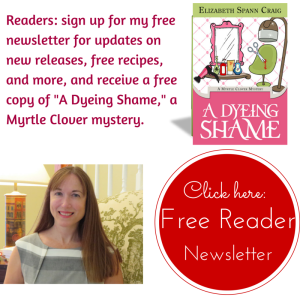Riley Adams's Blog, page 120
April 12, 2015
Adjusting to Expectations After Publishing Your First Novel
by Bryon Quertermous, @bryonq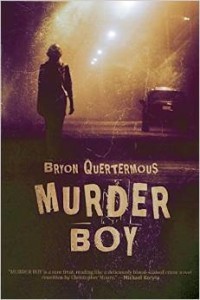
I’d always hoped that I would have my second book written before my first book was published and before the reception (good or bad) of the first book was known. Alas, I was not able to pull that off and I’m only about halfway through writing the sequel. In addition to writing under a deadline for the first time and the general issues that come with writing about the same characters again and keeping them fresh, the thing I’ve struggled with most is how much to stretch myself as a writer.
I’ve been very lucky to have a great reception for my first novel. It’s received great reviews, seems to be selling well, and the notes I get from readers are mostly positive. So it would seem to make sense that if I’m writing another book I’d want to do whatever I did the first time that got me this great reception, right? Well, sort of. I certainly want to keep readers happy, but I’ve had horrible luck any time I’ve ignored my instincts and tried to write toward what I thought readers expected. But I’ve also seen friends publish well-received novels and then get slammed when their next book goes in a different direction. I sure don’t want to torpedo my career before it’s even begun.
Aside from style and subject matter, there’s also the issue of confronting one’s weaknesses as a writer and whether or not to stretch and get better. For myself, this is plotting. I SUCK at traditional mystery plotting. In an effort to keep readers in suspense I end up over-complicating my plots to an absurd degree. It’s so bad that I don’t really anticipate facing down that demon until several more books down the line. Does that make me a weak writer? Maybe. But that’s the thin line an artist walks when they share their work with the world. I’ve always had high commercial ambitions for myself and that means making sacrifices once in a while. The key is to find a way to give readers what they want and what they expect in a way that maybe they don’t expect.
In the case of the next book I’m working on, I plan on stretching myself with my characters. I have a tendency with my supporting characters to create them more as caricatures than living, breathing people. This is a benefit of writing series fiction. I have the opportunity to go back to characters I may have just sketched out in book one and start filling in the details and shading that make for great characters. I also plan on stretching myself by not relying on easy jokes and meta jokes to power my narrative. I solved a lot of story problems in my first book by having the main character point to the fact that he wasn’t in a story and things in real life don’t always go the way they do in fiction. I think it worked well for the first book but it’s not a well I want to go back to again.
So that’s what my balance looks like. How about the other writers out there? Is it better to sacrifice some readers to attempt things that might fail but can make you a better writer? Is it better to forget stretching at all and keep giving readers what they want book after book?
Bryon Quertermous is the author of the novels Murder Boy and the forthcoming Riot  Load. His short stories have appeared in Plots With Guns, Thuglit, and Crime Factory among others, and in the anthologies Hardcore Hardboiled, The Year’s Finest Crime and Mystery Stories, and Uncage Me. He was shortlisted for the Debut Dagger Award from the UK Crime Writers Association. He currently lives outside of Detroit with his wife and kids.
Load. His short stories have appeared in Plots With Guns, Thuglit, and Crime Factory among others, and in the anthologies Hardcore Hardboiled, The Year’s Finest Crime and Mystery Stories, and Uncage Me. He was shortlisted for the Debut Dagger Award from the UK Crime Writers Association. He currently lives outside of Detroit with his wife and kids.
Adjusting to expectations after publishing your first novel via @bryonq:
Click To Tweet
The post Adjusting to Expectations After Publishing Your First Novel appeared first on Elizabeth Spann Craig.
Twitterific Writing Links
by Elizabeth S. Craig, @elizabethscraig

Twitterific writing links are fed into the Writer’s Knowledge Base search engine (developed by writer and software engineer Mike Fleming) which has over 30,000 free articles on writing related topics. It’s the search engine for writers.
Irony— The Final Cliché: http://ow.ly/LdN9c @DavidCorbett_CA
The Big ‘W’ and Joseph Campbell’s Hero’s Journey Story Arc: http://ow.ly/LdNbH @writeabook
7 Ways End Your Novel: http://ow.ly/LdNwz @enderawiggin
5 Price Points to Consider For Your Book: http://ow.ly/LdNCj @amcbooks
Tips and Tools to Make Your Writing Life Easier: http://ow.ly/LdNIq @ecoversed
Is a Writing Retreat Right for You? http://ow.ly/LcL1A @LynnHBlackburn
How Writers See Themselves And How Others See Them: http://ow.ly/LcKVW @AlienNextDoor
How to Create an Author Newsletter: http://ow.ly/LcLi3 @klbusti
The 4 Most Important Things To Remember About Pacing: http://ow.ly/LcLxV @writers_write
10 Tips To Get Your Profile Found On LinkedIn: http://ow.ly/LcLxk @askkim
How to Punch Up a Blurb or Query: http://ow.ly/LcLe5 @julie_glover
A Great Villain Can Save Your Story: http://ow.ly/LcKYo by RK Troughton
Writing Women Characters as Human Beings: http://ow.ly/LcKV5 @KateElliottSFF
5 Ways To Get Out Of A Writing Funk: http://ow.ly/LcL9m @NanciPanuccio
How to Always Have a Bagful of Exciting Writing Ideas: http://ow.ly/LcLuz @TalValante
It Is Never Too Late To Start Writing Your Bestseller: http://ow.ly/LcLf8 @galleycat
Make Your Writing Clearer: 6 Tips for Re-wording Sentences: http://ow.ly/LcLaq by Allison VanNest @Grammarly
Self-Pubbing Picture Books: 2 Agents Weigh In: http://ow.ly/Lbk2l @sangeeta_editor
Nonfiction: Your Past is a Source of Inspiration: http://ow.ly/LbjYA @ninaamir
Main character descriptions in 3rd and 1st person: http://ow.ly/LbiGH @LazetteG
5 ‘Show Don’t Tell’ Danger Zones: http://ow.ly/La5n8 @Diana_Hurwitz
How Independent Publishers Can Stay Profitable: http://ow.ly/Lbjuo by Liz Bury @pubperspectives
House of Cards: 5 Lessons for Writers from Season 3: http://ow.ly/LbkEj @MandyCorine
7 Stages Of Novel Revision: http://ow.ly/LbjCO @VeronicaSicoe
11 Things to Know About Query Letters: http://ow.ly/LrFxh @ColbyMarshall
6 Easy Steps to Great Character Mapping: http://ow.ly/Lbjhi @robinrwrites
How big is the “prestige factor” for trad-published writers? #FutureChat 4pBST / 11aET (now) http://ow.ly/LqS97 @Porter_Anderson
The Rules of Writing … or Not: http://ow.ly/LbiPw @storyfix
21 Surefire Ways to Sink Your Writing Career http://ow.ly/Lbj2O @deborahdeetales
Using ‘what ifs’ and other strategies to develop story ideas: http://ow.ly/LqLY1 @AlexJCavanaugh
When a Writer Becomes a Target: http://ow.ly/LbiXj @rachellegardner
How Do You Know When You’re Done? http://ow.ly/LbjUb @berkun
Analyze the Scene Structure: http://ow.ly/La5ff @Janice_Hardy
Modify Your Modifiers: http://ow.ly/La4Nj from Melissa Gilbert
How Does Your Novel Grow? The Writing/Gardening Connection http://ow.ly/La4TO @Katrinakittle
On Heroism in Romance: http://ow.ly/La4FE @dearauthor
Amazon Advertising Services for Indie Authors, Yea or Nay? http://ow.ly/La4DA @goblinwriter
7 Key Elements of Pacing a Novel: http://ow.ly/La5bA @MartinaABoone
Reading is the Training Ground for Becoming a Better Writer: http://ow.ly/La4Ko @jodyhedlund
How to Find Your Trademark Writing Style: http://ow.ly/La5kO @CSLakin
Query question: more on comp titles: http://ow.ly/La4QJ @Janet_Reid
5 Strategic Mistakes In Self-Publishing: http://ow.ly/Lo2Ck @benmwallace
When Rejection is Necessary, or Rejecting All the Fear: http://ow.ly/La4XU @msheatherwebb
Create Dialogue From the Outside In: http://ow.ly/La4Hj @jackieblain
Fall in Love with Your Characters (So The Reader Will Too): http://ow.ly/La57m @Author_J_White
Writing Clear Accessible Sentences: http://ow.ly/L5DGq @lindasclare
Dr. Seuss On Writing: http://ow.ly/L5B21 @writers_write
Tips for introducing a character: http://ow.ly/L5BzT @EimhWrite
The need to reform copyright: http://ow.ly/L5C5W @JAKonrath
The mythology of the starving, tortured writer: http://ow.ly/L5BQE @mikemartinez72
Rediscovering the joy of writing: http://ow.ly/L5DmZ @nownovel
Artistic Freedom vs. Crowdsourcing, Censorship, and the Dunning-Kruger Effect: http://ow.ly/L5BFw @annerallen
Helpful Websites for Authors to Learn About Self-Pub: http://ow.ly/L5AMe @amcbooks
Why risk aversion is killing publishing innovation: http://ow.ly/L5CAN @JanetKGrant
Create A Protagonist Audiences Will Relate To: http://ow.ly/L5Dvb @woodwardkaren
Book Trailers And Using Video For Book Marketing: http://ow.ly/L5CTe @thecreativepenn
The Rise of the Nameless Narrator: http://ow.ly/LfcTY @newyorker by Sam Sacks
Character Development – Making the Reader Care: http://ow.ly/LffqK @behlerpublish
1 author considers stopping marketing and writing more books: http://ow.ly/Lfbcv @JamiGrayAuthor
Lessons from a great book jacket designer: http://ow.ly/Lfe57 by Alan Rinzler
Can a small publisher make ‘pay what you want’ model work? http://ow.ly/LfdE9 @asap_jonathon @flavorwire
Focus the Narrative Drive: http://ow.ly/Lfb7b @janice_hardy
Navigating a Big Writer’s Conference: http://ow.ly/LfeER @writeabook
Can A Book Teach You How To Write? http://ow.ly/Lff8w @lawz_m
Screenwriting: Hitchcock’s POV Says You’re A Psycho: http://ow.ly/LfcCz @ozzywood
On School Visits from an Author’s Perspective: http://ow.ly/LfaRt @dawnafinch
Anthropomorphic: Definition and Examples for Writers: http://ow.ly/LfenP @joebunting
NASA’s Space Educators’ Handbook (for SF Writers): http://ow.ly/Lfccz
Things ‘Justified’ Teaches About Writing: http://ow.ly/L1ogF @misskyokom
Upcoming conferences and a surprising look at the Indian book market: http://ow.ly/LeUQ5 @Porter_Anderson
Attracting Readers to Our Newsletters: http://ow.ly/LeShc
Stress-Free Mingling And Conversation Starters At Conferences: http://ow.ly/L1oCy @writersrelief
Effective Use of LinkedIn: http://ow.ly/KYpAa @terrywhalin
Why 1 Writer Quit Goodreads (or, The Bookternet Is Not Safe for Women): http://ow.ly/L1oUN @passivevoiceblg @brennacgray
3 ways to lead Amazon search bots to your book: http://ow.ly/L1owO @niniehammon
The Declaration Every Great Writer Makes: http://ow.ly/L1oGY @jeffgoins
The Ultimate Guide to Writing Your Manifesto: http://ow.ly/KYiHa @danasitar
Reasons why querying writers may not be getting requests: http://ow.ly/L1pov by Kim English
Whose Story Is It? Self-Editing for Point of View: http://ow.ly/L1pza by Rachel E. Newman
Juxtapose like Banshee to Make Work Resonate with Readers: http://ow.ly/L1ol1 @lansi26
Don’t Wait for the Mood to Strike to Write: http://ow.ly/L1p0d @ediemelson
The Venn Diagram Stage of Writing: http://ow.ly/L1pgI by Elisabeth Sharp McKetta
As The World Gets Smaller, Authors’ Jobs Get Bigger: http://ow.ly/LdkTF @Porter_Anderson
The author assistant relationship needs to be a partnership: http://ow.ly/KY9cU ?@SKWillsAuthor @patricia_eddy @K8Tilton
22 Free Online Courses for Writers: http://ow.ly/KY7ye @ShelleySturgeon
Why Writers Need Marketing Plans: http://ow.ly/KY8LE @KristenJett
How to add value to a novel to sell more: http://ow.ly/KY8hG @lansi26
Has KDP Pre-order helped level the playing field for authors? http://ow.ly/KY6Jp @thecadencegrp
The post Twitterific Writing Links appeared first on Elizabeth Spann Craig.
April 9, 2015
Eleven Things You Should Know About Query Letters
by Colby Marshall, @ColbyMarshall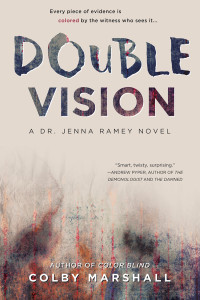
You’ve done it. You’ve finished and polished your first manuscript. Let’s see, what’s next. Whaaat to do next…
Oh, no… Not that…
*cue Jaws theme*
The query. You have to write a damned query.
This one page pitch beast is to publishing what that obnoxious 900 sheet stack of mortgage paperwork that requires a signature every page is to a homebuyer who just wants the damned key to their house already. But it’s a necessary evil. And it’s not easy.
Query letters vary greatly in quality, and the range of reactions they elicit can be as diverse as the types of queries themselves. I’ll go ahead and tell you, this post isn’t a how-to on writing a query letter, nor is it all-inclusive regarding elements to include in a query letter. The topic of how to write a query letter has been covered more than the measles outbreak at Disneyland, the Obamacare debate, and every Walking Dead theory ever conceived of combined. If you need something more instructive, check out this wonderful post of Elizabeth’s: http://mysterywritingismurder.blogspot.com/2010/12/querying.html . It contains lots of links with that sort of info and was very helpful to me when learning to write a query.
So, I won’t give you a tutorial, but I can relay some things I’ve noticed along my way: a few intricacies people tend to over-think, some successful techniques, and a few aspects of queries that sometimes don’t get quite as much emphasis as they should. I can’t offer a final, perfect query formula. This powerful dark magic does not yet exist. But what I can do is pass along some things I’ve learned through securing an agent and getting editor requests over the years that will hopefully add a little extra insight. So without further ado, I give you the Top Eleven Things I’ve Learned About Query Letters:
11.) Go the extra mile when researching an agent or editor’s preferences.
We’ve all been told it’s a Cardinal sin to mass blast a query to 100 agents and to be sure to address them by name instead of “Dear Agent. But more in depth preferences on how some agents wish to be address can fall through the cracks. I once queried an agent who, deep in the bowels of his blog asked that all queries address him as Neil* (the names have been changed to protect the particulars). While Mr. For-Some-Reason-Doesn’t-Like-Seeing-His-Last-Name-on-Queries might not send you a form rejection just for using the surname that shall not be-erm-named—after all, it is standard querying practice and you bothered to personally address him—obliging his request can only show you did your homework and maybe give you a leg up.
10.) Just say no to attachments.
Agents and Editors (and anyone on the internet with a brain) know opening attachments from unknown senders could result in a nasty virus. Not only that, but e-mails with attachments coming from anyone other than regulars in that agent or editor’s inbox are spam folder magnets. You might think that Best Agent Ever would rep you in a second if only she saw your first five pages/your professional headshot/a picture of your kitten Squishy Face. Only the first of those is possibly wanted, but the point is, she won’t see your query letter (or Squishy Face) at all if the attachments give it a one-way ticket to the spam folder.
9.) Pimp your bio
Traditionally, at least one paragraph of a query letter is devoted to a bio of the author. Obviously, the agent or editor reading wants to know more about the person behind the work she’s considering. But some pieces of bio information benefit your cause more than others.
In addition to your education info, published works, and awards or other writing-related credentials, pack your bio with facts relevant to your book or a potential platform you have or are building that could make you more marketable as an author. If your main character is a meteorologist and so are you, include your day job, but if you’re a theme park tour guide, maybe hold that one back for this book. Is your book set in Italy and you lived there for five years? Yep. Mention it.
8.) Suppress the urge to—*ahem* “enhance” your bio.
You’d think this would go without saying, but don’t lie in your bio. It’s never good to start off a business relationship with dishonesty.
7.) It’s okay to leave out that couple of sentences in which you gush about a connection you don’t have.
Lots of articles about how to write a query letter encourage writers to include a sentence or two about why they’re querying this agent specifically. Some advise mentioning some of the authors or books you love that the agent represents or editor edits, or to explain you thought agent/editor might be a good fit for you and your book since agent/editor’s client’s book showed a similar writing style, sense of humor, or appreciation for main characters with smokin’ fictional six-packs. If you have read and enjoyed agent/editor’s client’s work and/or legitimately have a similar writing style, then it can’t hurt to say so.
If you have another genuine, specific reason you’re queryingthis agent or editor, by all means, include it. Maybe you’ve followed their blog for years and think your personalities would mesh based on her penchant for sarcasm and low tolerance for people who mispronounce the word “pecan.” Perhaps you heard him speak on a panel and what he said about his approach to agenting appealed to you.
Bottom line: personalization is great. But as long as you’ve researched the agent’s preferences thoroughly, it’s ok to let the query explain for itself why you think the agent might be right for your book.
6.) It’s definitely okay to include a couple of sentences to gush about strong connections you do have.
Definitely include that time you met her at a conference (unless the meeting involved you ambushing her with your pitch as she exited a stall in the ladies’ restroom). Even if Conference Agent doesn’t remember meeting you specifically (agents and editors shake lots of hands at conferences!), it’s a subtle indicator that you’re serious enough about your craft that you attend industry events. Also be sure to tell her if you’re querying because you were referred by one of her clients or if you have a manuscript that just happens to be that modern retelling of To Kill a Mockingbird set in space she’d raved about on her blog in a list of books she’s dying to represent.
5.) Yes, your letter should have a paragraph providing your manuscript’s vital stats. No, its placement will not make or break your chances.
You know the essentials: title, word count of the complete manuscript, genre…Any query destined to receive a manuscript request includes these. Easy, right?
And yet, for some reason, writers agonize over whether the placement of those few little pieces of information will be the difference between a request and a rejection.
“Leading off with it bores agents before they even get to your pitch! Put it last!”
“Always open with the basic, pertinent information. It’s a professional, strong opening!”
But here’s the truth, and you can take me to the bank on this one, because I’ve written queries both ways and have gotten requests off of both versions. It doesn’t matter where the “specs paragraph” is located. All that matters is that the pitch leaves the agent in crisis wanting more.
4.) It’s all about the voice, baby.
Many queries are so bland they could be served on a heart patient’s diet tray alongside cottage cheese and boiled cauliflower. You can’t knock them too hard, though. It’s tough to condense an 80,000 word book into a one page intriguing explanation.
Sometimes, stepping out of synopsis speak and stepping into your story’s voice can take a good query to a great one. Say you’re pitching your MG novel SPELLS AND SNEEZING SPELLS. This first paragraph might intrigue an agent:
11-year-old Alex is like every person in his family: magic. He’s also the only one who happens to be allergic to magic. So, he keeps to himself and tries to steer clear of mysterious orbs, but one day, he comes home from school to find his whole family vanished, a ransom note left in their place. It looks like the only way to get his family back is to follow the magic-steeped clues the kidnappers left and hope he doesn’t run out of Kleenex along the way.
But this first paragraph might intrigue him more:
How could this be happening to him? Eleven years old and Alex had never once so much as had to use his epi-pen, despite the epidemic of magic that runs in his family and the health hazardous by-products they expose him to. He wants nothing more than to come home from school and avoid his obnoxiously magical parents and siblings, and, by extension, having to run to the store for more Kleenex. But when his family is abducted, replaced by a note demanding Alex use his own peculiar brand of magic for their schemes as ransom, he musters his bravery, arms himself with inhalers, and charges into a terrifying maze filled with pixie dander, dusty magic carpets, and high faeries higher in histamine.
3.) Make your protagonist pop.
Your pitch should let the agent know who your protagonist is and what his conflict is, but you can do more to highlight the right things about your hero. Instead of telling about me that Dark headed, fifty-five-year-old Tom is about to find out he’s the only person who can stop the murder of someone he doesn’t even know, tell me about how agoraphobic Tom hasn’t been out of his house since he was held up as a teller at the bank he worked at four years before. A hostage is being held across town, and Tom knows he has the only information that can save this stranger. But the only way to pass along what he knows is in person. Unless details like age or hair color are relevant to the story, skip them in favor of your main character’s compelling features.
Another way to make sure your main characters shines his brightest is to make sure your pitch includes your character’s actions regarding his conflict and not just thing happening to him. Aladdin is much more compelling after going into a dangerous place to retrieve this mysterious lamp than he would’ve been if he’d just been sleeping under a tree when it dropped and fell on his head.
2.) Compare, but compare alike.
If all the agents and editors got together and took a shot every time a hopeful writer’s query said his books were similar to James Patterson’s or Nora Roberts’, there’d be some pretty nasty hangovers the next day. It’s ok to compare your work other authors that your work is actually similar to, but try to control the urge to call yourself the next Stephen King.
1.) Doing something unconventional or debatable can be an amazing or a volatile thing.
Sure, there will always be the Cinderella stories of how someone landed an agent because they queried their dream agent even though that agent wasn’t accepting submissions at the time. Sometimes, out-of-the box pitches like a query letter written from the point of view in the kidnapper in her manuscript, demanding a request in exchange for the safety of the character in the book who is kidnapped. It might just cool enough to garner a request, or it might creep the agent out and send her running. It depends on the individual agent. So weigh risks wisely, and always remember your story has to sell itself. Rules aren’t a bad thing, and your query can stand out even if you play by every single one.
How do you try to make your query stand out from the pack?
Writer by day, ballroom dancer and choreographer by night, Colby has a tendency to  turn every hobby she has into a job, thus ensuring that she is a perpetual workaholic. In addition to her 9,502 jobs, she is a proud member of International Thriller Writers and Sisters in Crime. She is actively involved in local theatres as a choreographer and occasionally indulges her prima donna side by taking the stage as an actress. She lives in Georgia with her family, three mutts, and an array of cats that, if she were a bit older, would qualify her immediately for crazy cat lady status. She’s uniquely qualified to write about Dr. Jenna Ramey’s synesthesia, because she has the rare condition.
turn every hobby she has into a job, thus ensuring that she is a perpetual workaholic. In addition to her 9,502 jobs, she is a proud member of International Thriller Writers and Sisters in Crime. She is actively involved in local theatres as a choreographer and occasionally indulges her prima donna side by taking the stage as an actress. She lives in Georgia with her family, three mutts, and an array of cats that, if she were a bit older, would qualify her immediately for crazy cat lady status. She’s uniquely qualified to write about Dr. Jenna Ramey’s synesthesia, because she has the rare condition.
Learn more about Colby and her books by visiting her website at www.colbymarshall.com
ABOUT DOUBLE VISION:
New from the author of Color Blind…FBI profiler Jenna Ramey has synesthesia, a  neurological condition that causes perceptions of color to flash through her mind, triggered by seemingly unrelated stimuli. But she has learned to understand and interpret these associations. They help her do her job. They can help save lives…
neurological condition that causes perceptions of color to flash through her mind, triggered by seemingly unrelated stimuli. But she has learned to understand and interpret these associations. They help her do her job. They can help save lives…
A little girl has witnessed a mass shooting. What she knows may be the key to finding the man responsible. Jenna has been tasked with drawing her out, figuring out what she saw, what she remembers, what it means.
But Molly is an unusual child. She is sweet and bright, and eager to help, but she has a quirk of her own: an intense preoccupation with numbers. It helps her notice things that others don’t. It also leads Jenna into a maze of speculation that could turn into a wild goose chase while the body count continues to rise.
Jenna and Molly view the world through their own filters. In some ways, they speak different languages. Now Jenna must learn to communicate, to break Molly’s code, to understand the mind of a murderer…
11 things to know about query letters via @ColbyMarshall:
Click To Tweet
The post Eleven Things You Should Know About Query Letters appeared first on Elizabeth Spann Craig.
April 5, 2015
Attracting Readers to Our Newsletters
By Elizabeth S. Craig, @elizabethscraig
I may have been slow to the email newsletter party. I believe, in fact, that I was the last guest to show up. I’m finally making up for lost time.
I mentioned recently that I’d actually decided to subtly promote my reader newsletter. This may not really qualify as promotion since it actually means I’m helping readers just locate the newsletter signup. It was almost secret before. If readers somehow found their way to my website, perhaps they could miraculously locate my newsletter signup in my crowded sidebar.
Realizing that this was (however accidentally) rather anti-reader in approach, I thought the whole thing through a bit more. I started putting my newsletter signup in my email signatures, on my profile at Wattpad, on Goodreads, on Facebook, and other places that readers were likely to congregate or look me up. I also pitched my newsletter on this site on the reader-oriented pages (books, buy my books, etc.) This has resulted in over 30 signups since I started this drive in mid-March.
I’ve been reading noticing on writer sites/blogs that many writers have a visual prompt, sort of an ad, for their newsletter. I decided that I’d like to come up with a visual that would hopefully stand out to readers. Designs that I create myself tend to be hideous. This is why I hire professionals for covers, websites, etc. But for something small like this, I decided I could do it myself with Canva.
I wrote about Canva here. It’s a free tool that helps me handle small projects that I would rather not pay for. No design skills? No worries! The ability to drag and drop is all that’s really needed for Canva.
Now…don’t judge. But with minimal work (ten minutes?), I was able to come up with this:
So, pretty simple elements here, nothing fancy. Book cover, call to action that sort of looks like a button, a bit of text, and a picture of me.
While I was on Canva, I made the whole image hyperlinked to the signup page for my newsletter. So readers can click anywhere on the image and it will take them to my newsletter signup page. I use Mail Chimp (free for up to 2,000 subscribers) for my newsletters. Here is a link to Mail Chimp’s directions for generating a link to your signup form. You scroll about a quarter of the way down the page. Basically, you’re going through the ‘Lists’ tab on your account and then clicking ‘signup forms’ to get Mail Chimp to generate a link.
But the big thing here is the incentive to sign up…a free book. I recently watched a very informative free video series from author Nick Stephenson on, among other things, the importance of incentives for newsletter signups. What’s more, the incentive is not my perma-free book, it’s a book that, while inexpensive to begin with, would cost readers several dollars if they were to pay for it online. So a fairly decent incentive…a free full-length novel. But then I do have 8 books in this series, so I can afford to give this one away. I put it on my reader-oriented pages on this site.
I also had this newsletter ad placed in the back of one of my books. I had my formatter (thanks, Rik Hall) stick it at the end of the perma-free book. So the readers who are being introduced to the series via the freebie get another freebie for signing up. The perma-free book acts, as Nick Stephenson put it, as a funnel that draws in new readers and the incentive encourages them to sign up for the newsletter. Works for me.
What if you don’t have 8 books in a series? What if you don’t want to give away an entire book? There are other incentives for signups out there. I’ve seen things like “sign up for my newsletter and automatically be entered in a drawing for a $25 Amazon gift card.” I’ve seen short stories and novellas as giveaways. You can give away swag like notepads, tee shirts, coffee mugs. Putting your cover image on these things is easy and cheap(ish) through VistaPrint or CaféPress or Zazzle. The sky is really the limit.
Obviously, the cooler the giveaway, the more likely it serves as encouragement for readers to sign up.
My reader newsletters are fairly chatty updates. I know my readers pretty well and I create the newsletter with them in mind. I give a (somewhat) personal update, I include Southern recipes, I tell them what I’m working on, and lately I’ve given book recommendations based on what I’ve been reading.
How do you encourage readers to sign up for your newsletter? What types of things go into your newsletter? If you haven’t started up a newsletter, it’s never too late…I promise.
Tips for attracting readers to our newsletters.
Click To Tweet
Image: Death to the Stock Photo
The post Attracting Readers to Our Newsletters appeared first on Elizabeth Spann Craig.
April 4, 2015
Twitterific Writing Links
by Elizabeth S. Craig, @elizabethscraig

Twitterific writing links are fed into the Writer’s Knowledge Base search engine (developed by writer and software engineer Mike Fleming) which has over 30,000 free articles on writing related topics. It’s the search engine for writers.
If you’re one of my readers…I have a new book out. :) Body at Bunco released April 2.
And Happy Easter to all who celebrate.
Could You Benefit From a Website Redesign? http://ow.ly/KY5je @chrismjane
10 Key Questions for Evaluating Your Book’s Competition: http://ow.ly/KY6el @KPickett_Editor
7 Deadly Sins of Dialogue: http://ow.ly/ @manzanitafire
Not investing in…(an) ISBN…relegat(es) your title to the shadow realm: http://ow.ly/KY52j @Goodereader
30 Websites for Authors to Learn About Self-Publishing: http://ow.ly/KY4Sv @amcbooks
2 Video Tutorials on Nailing Your Concept: http://ow.ly/KY5sT @storyfix
Organization in Writing: Brainstorming: http://ow.ly/KY5V9 @rsmollisonread
Responding to suggestions in a rejection letter: http://ow.ly/KY0Re @Janet_Reid
How to Conduct a LibraryThing eBook Giveaway: http://ow.ly/KY7VM @shelleyhitz
Lightning Source vs. CreateSpace: http://ow.ly/KY6u2 @KPickett_Editor
How to Format Your Amazon Description to Stand Out: http://ow.ly/KYbJx by Jordan Smith
Post Roundup: Hundreds of Blog Post Ideas for Writers: http://ow.ly/KY7g8 @ShelleySturgeon
Do You Know Your Book Publishing Goals? http://ow.ly/KY7aU @thecadencegrp
Pros and Cons of Head Hopping: http://ow.ly/KY62z @jenniferlellis
How Authors Can Build Content Communities: http://ow.ly/KY11v @HalRobinson
Becoming a Student of Your Own Creative Process: http://ow.ly/KY0U4 @DanBlank
You Bought the Rights to that Music, Didn’t You? http://ow.ly/KY4wn @passivevoiceblg @jacquelynlynn
Screenwriting: each story deserves to have its unique structure and elements: http://ow.ly/KVBsG @ivoraza @scriptmag
Why digital natives prefer reading in print: http://ow.ly/KVB35 @mikerosenwald
Book Marketing Must Center (Mostly) on the Author: http://ow.ly/KVB8h @berkun @Janefriedman
7 Literary One Hit Wonders: http://ow.ly/KVD13 @GuyPortman
Being Indispensable as a Writer: http://ow.ly/KVB01 @kristinerusch
15 ingredients of authorial voice: http://ow.ly/KVB9x @stephenwoodfin
Author Blogs: What is Your Primary Blog Goal? http://ow.ly/LaoGi @jimhbs
The infuriating practice of cliffhanger endings: http://ow.ly/KVCAY @DeborahJay2
The Independent Author Professionalism Manifesto: http://ow.ly/KVCIV by Jordan Smith
What Should You Charge for an Indie eBook? http://ow.ly/KVD6Q @henrybaum
Join today’s #FutureChat on ebook subscription providers: 4pBST/11aET/8aPT (now) @Porter_Anderson
Ebook subscription services and “taking the model even further”: http://ow.ly/Laqye @Porter_Anderson @jwikert
How to Use Lyrics Without Paying a Fortune or a Lawyer: http://ow.ly/KVCWJ @HelenSedwick
How to Produce Audiobooks with Amazon ACX: http://ow.ly/KVBim @daveBricker
A Step-by-Step Guide to Dealing with Content Theft: http://ow.ly/KVCT8 @HelenSedwick
US authors: want your indie ebook available in your state’s library system? http://ow.ly/LapKx @Porter_Anderson @libraryself_e
7 steps to overcome writing or publishing fears: http://ow.ly/KSg94 @jamigold
Tips When Writing Multiple POV Novels: http://ow.ly/KRZNf @lisagailgreen
Exploring Genres in Creative Nonfiction Writing: http://ow.ly/KRZHX @WritingForward
Verb Tense: how to say when we mean: http://ow.ly/KSezV by Emily Leverett
Using dictation software instead of typing: http://ow.ly/KS0be @karenvwrites
The Units of Story: The Subplot: http://ow.ly/KS01a by Shawn Coyne
To Be Eaten in Case of Emergency: Inspiration and Comfort for Writers: http://ow.ly/KSf3x @EdanL
The Philosophy of Villains: http://ow.ly/KSgmy @epbure
Woe to Those Who Love Writers (cartoon): http://ow.ly/KSfSO via @behlerpublish
10 Links That Demonstrate Your Self-Published Book Looks Cheap & Amateurish: http://ow.ly/KSe61 @10MinuteNovelists
“Every Book Still Kicks My A**” Words of Solidarity from SCBWI 2015: http://ow.ly/KSeUu @DianaZipeto
Ins and Outs of Creating a Launch Team for a Book Release: http://ow.ly/KSeHP @jodyhedlund
Description in worldbuilding: its role varies by genre: http://ow.ly/KQaIK @JulietteWade
How to Write Cliffhanger Chapter Endings: http://ow.ly/KQ7Th @CherylRWrites
5 Philosophies of Social Media: http://ow.ly/KQ5Zx @Janefriedman
7 Qualities of High-Concept Stories: http://ow.ly/KQ7Gb @storygeeks @writersdigest
Character Archetypes: http://ow.ly/KQagG @KMWeiland
7 Rules of Choosing Names for Fictional Characters: http://ow.ly/KQ834 @ESimsAuthor @writersdigest
Isn’t It Time For Self-Publishers To Get Over Self-Publishing? http://ow.ly/L5G37 @Porter_Anderson @thecreativepenn
A Big Storytelling Don’t: Messing with Timelines: http://ow.ly/KQbbA @fictionnotes
25 Editing Tips for Tightening Your Copy: http://ow.ly/KQ9Un @thewritelife
34 Ways to Use Pinterest to Market Your Book and Your Brand: http://ow.ly/KQa0v @writerplatform
3 Simple Prewriting Strategies: http://ow.ly/KQ9CB @writeathome
25 Things Most People Don’t Know About Self-Publishing: http://ow.ly/KQ7eb @amcbooks
Authenticity in Children’s Fiction: http://ow.ly/KQ6Tu @agentsaba
Homicide info for Writers: http://ow.ly/KM50y @FionaQuinnBooks
The Art of Description: http://ow.ly/KLVz8 @AnneMarbleAAR
Can writing be taught? And what do writing teachers teach? http://ow.ly/KLVb1 @Roz_Morris
Tying Character Types to Plot, Suspense, and Emotion: http://ow.ly/KLVoJ by Jeanne Cavelos
15 Tips For Writers On Social Media: http://ow.ly/KM3X3 @MiaJouBotha
Revision Prep: Create a Revision Plan: http://ow.ly/KM58b @Janice_Hardy
Why writers should care when a bookstore files for bankruptcy: http://ow.ly/KM4nq @JanetKGrant
Word Counts – How long should your novel be? http://ow.ly/KM40U @writers_write
Today is World Backup Day €” March 31st. Have you backed up your work lately? http://ow.ly/L1qsO
Topic Twists Or How To Generate A List Of Story Ideas: http://ow.ly/KLVhx by LuAnn Schindler
How to Personalize Your Blog in 3 Simple Steps: http://ow.ly/KM4ko @BlotsandPlots
How to Create Picture Ebooks for Kids: http://ow.ly/KM5hk by Laura Backes @Janefriedman
Today is World Backup Day €” March 31st. Have you backed up your work lately? http://ow.ly/L1qdw
10 strong sci-fi novel opening lines: http://ow.ly/KM48R @joelwillans
The appeal of late-night crime in mysteries: http://ow.ly/KZhJw @mkinberg
The Lazy Author’s Way to Identify and Overcome Writing Weaknesses: http://ow.ly/KJ6fD @KMWeiland
The difference between self-pub and indie-published: http://ow.ly/KIZ0Y from Writing Questions Answered
Things Indie Writers Learned in 2014: http://ow.ly/KJ67Y @kristinerusch
Real Life Diagnostics: Does This YA Sci Fi Prologue Work? http://ow.ly/KIVx8 @Janice_Hardy
6 Reasons Why Some Books Will Never Be Bestsellers: http://ow.ly/KIVGM @selfpubreview
How to choose book cover image? Genre, quality count, but beware clones: http://ow.ly/KJ6Qj @ChrisKridler
Returning to a Writing Habit: http://ow.ly/KIWdC from Paperback Writer
Tips for Back Cover Copy: http://ow.ly/KJ6tX from Richard S. Todd
The Writer vs the Author: http://ow.ly/KZgFH @megwolfewrites
Why 1 author will take her trad. series to self-pub: http://ow.ly/KXYQJ
Guest Blog to Grow Your Platform: http://ow.ly/KIV4y @FinishedPages
Talents and Skills Thesaurus Entry: Super Strength: http://ow.ly/KIUXZ @beccapuglisi
Query Question: what if an agent asks for an outline from a non-outlining author? http://ow.ly/KIVeo @Janet_Reid
5 Myths About Self-Publishing: http://ow.ly/KJ5bK @Wiseink
What You May be Missing about ’50 Shades of Grey': Story Physics: http://ow.ly/KFAJk @storyfix
Writing More Diverse Characters-The TCI: http://ow.ly/KFAQF from The Writer’s Helpers
Structuring Phase–The 2nd Stage of Building a Book: http://ow.ly/KFuDg @writeabook
Unsure about your attempt at describing diverse characters? A free crit service: http://ow.ly/KFvvK from Writing With Color
How to Become a Writer as a Second Career: http://ow.ly/KFuN7 @flexjobs
You think writing’s a dream job? It’s more like a horror film: http://ow.ly/KFwhh @passivevoiceblg @timlottwriter
The post Twitterific Writing Links appeared first on Elizabeth Spann Craig.
April 2, 2015
Making A Writing Partnership Work
by Jacques Ravenne and @LeFrenchBook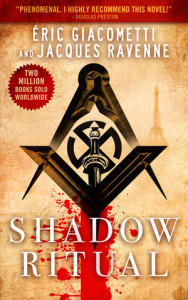
Eric Giacometti and I have written nine books together in a series that begins with Shadow Ritual, which was just released in English. It’s a curious experience, one that requires organization…and diplomacy.
Eric and I take about nine months to write a novel: one month for the outline, two months of research, and the six remaining months for writing.
When we come up with the outline, we see each other nearly every day. We set up the plot, balancing narration and characters, weaving in suspense, planning the cliffhangers. It’s meticulous work and often raises more questions than answers. At the same time, it’s a fascinating phase, as we watch a structure rise out of nothingness. It is both fragile and seductive, and in it, the novel will take root and blossom. It is also technical, and we use a lot tools, from Excel sheets to mind maps, to help us better visualize the novel’s structure and see where it could be unbalanced. For example, maybe there is a major character who doesn’t appear often enough in the narration and that quickly becomes problematic. We can fix the problem right away. It’s like being a goldsmith.
When we go into the research phase, the work is very solitary, because we have already defined who does what. It’s very exciting work, a mix of web research, hours spent in libraries, and travel, often abroad, to soak up an atmosphere or prepare descriptions. There are intense moments, like for one of the novel that focuses on Casanova, when we absolutely had to go spend some time in Venice. The hard life of a writer.
Then comes the longer, harder work of writing. The novels in the series after Shadow Ritual are built around two plot lines—one is set in modern day times with our protagonist, Inspector Antoine Marcas, while the other is historical, and can take place in the Middle Ages or during the French Revolution, for example, depending on the story. We each are responsible for one of the plot lines, but the two have to be written at the same time in order to include foreshadowing and other effects that work like a system of echoes, allowing our readers to go from one period of time to another smoothly.
So, at the same time, we each write two chapters, which we then exchange by email. This way, we can follow in real time the progression of the narrative, suggest changes and smooth out effects. This work also includes a key phase of rewriting. Each of us has our own style. Eric, with his background as a reporter, likes short, nervous sentences, while I’m more of an academic, and prefer long, dense sentences. We don’t want our readers to feel like they are changing pace or tone, so we rewrite each other’s text. This requires a delicate touch, as writers are always very sensitive about their writing. Fortunately, Eric and I have known each other since we were teenagers, and we resolved our ego problems some time ago.
In the end, we write our novels twice. So if you thought that two writers could write faster and more easily than one, you were wrong. In fact, you multiply the questions and problems…by two.

Picture by Melania Avanza
Eric Giacometti and Jacques Ravenne are bestselling French thriller writers, with a nine-book series that has sold 2 million copies worldwide and translated into 17 languages. In March the series made its debut in English with Shadow Ritual, an electrifying thriller about the rise of extremism. Eric is also an investigative report who has covered a number of high-profile Freemason scandals, and Jacques, himself a Freemason, is also a literary scholar who has written a biography of the Marquis de Sade and edited his letters. Together they have created this very successful series about a French Freemason cop. Douglas Preston calls Shadow Ritual “phenomenal.”
Making a writing partnership work (via @LeFrenchBook )
Click To Tweet
The post Making A Writing Partnership Work appeared first on Elizabeth Spann Craig.
March 29, 2015
When You Know It’s Time to Move On
by Elizabeth S. Craig, @elizabethscraig
In October, my agent received an email from my editor. I have a release scheduled in the Southern Quilting series this June (book 5). My editor knew my contract for the series was about to run out and asked me to come up with some ideas for additional books for the series.
I developed two book outlines but never emailed them. My editor wrote my agent last month to say that print sales had decreased (I’ve no doubt…they’re only a fraction of my digital sales for my self-published books) and Penguin Random House wanted to stop printing the series. Instead, they were interested in my exploring their e-only line, InterMix.
And…I asked for my character rights back.
The publisher promptly returned a non-renewal notice for the series and a permission grant for me to continue it via self-pub.
I know my ebooks have been selling well—I get royalty checks. I haven’t drunk the Kool-Aid here. I know what I need a big-five traditional publisher for…expansive print distribution into bookstores. But this is now becoming less and less important as indicated by my publisher moving away from printing this series.
I read my agent’s email and immediately knew I wanted to self-pub the series before I’d even finished the email. I’m fortunate enough to have a decent reader base at this point, making this the right decision. Would I discourage everyone from accepting an e-only deal? I wouldn’t. But I’d add that we really need to go into these types of arrangements with our eyes open. What do we want to get out of it? We should do some soul-searching.
Admittedly, I didn’t give InterMix a chance. I didn’t explore their royalty structure. I didn’t ask questions. I didn’t query. I just pulled out. This is completely based on my current contracts for digital books and the small percentage of royalties I receive on net.
Challenges for me will be maintaining the series branding without making it too close to the 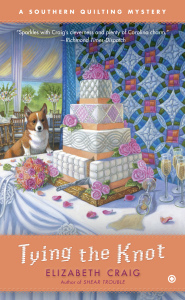 publisher’s covers, for copyright reasons. The quality I’ve got to match/approach is evident as you look at the cover on the right for my upcoming June release. Another challenge will be ensuring the same level of quality in writing, editing, and production. I think I can swing it.
publisher’s covers, for copyright reasons. The quality I’ve got to match/approach is evident as you look at the cover on the right for my upcoming June release. Another challenge will be ensuring the same level of quality in writing, editing, and production. I think I can swing it.
It’s tricky. But I’ve done it before. That’s how the Myrtle Clover series started out.
The nice thing is that I have a strong audience for the series and it had a good push from the publisher and visibility at retailers. Luckily, I have that as a base.
Also nice is that now I have two outlines ready to go. :)
Important for writers, I think—don’t let these types of decisions become personal. I love my editor…I’ve had a fantastic working relationship with her. My agent and I have worked together well. This isn’t about relationships…this is business. This is about my making a living.
I think they understand that. There are no hard feelings. I’m not just taking my ball and going home out of pique. E-only isn’t a good fit for me…that’s all there is to it.
When Midnight Ink dropped my Myrtle Clover series in 2010, I was extremely disappointed. My characters, I thought, would never come to life on the page again. In 2015, I know that my characters can keep having adventures as long as I choose to write them and the readers are interested in reading them.
With this series moving to self-pub and with the end of the Memphis series (an orphaned series that I don’t have the rights to self-pub) I thought, “This is it—now I’m 100% indie.” Before realizing that….no, not really. I have nine traditionally published books with a tenth on the way in June. I receive income from those as long as they keep selling and they’re always for sale online. With that in mind, I guess I’ll always be a hybrid.
My editor invited me to pitch Penguin Random House another series. I never like to say never. But—I’d have to have a really good reason to pitch.
What direction is the weather vane pointing for you? Hybrid, traditional, self-pub?
Why 1 author will take her trad. series to self-pub.
Click To Tweet
Image: MorgueFile: Bosela
The post When You Know It’s Time to Move On appeared first on Elizabeth Spann Craig.
March 28, 2015
Twitterific Writing Links
by Elizabeth S. Craig, @elizabethscraig

Twitterific writing links are fed into the Writer’s Knowledge Base search engine (developed by writer and software engineer Mike Fleming) which has over 30,000 free articles on writing related topics. It’s the search engine for writers.
How to Find the Number of Items in Each Amazon Category: http://ow.ly/KDRcd @FullTimeFBA
Query Question: I think I have an agent but she’s not responding: http://ow.ly/KDRRH @Janet_Reid
Sell more at signings by engaging customers: http://ow.ly/KDRwk @tombarry100
3 Magic Bullets for Success: http://ow.ly/KDQSS @mayachristobel
How to Import Word Comments into Scrivener: http://ow.ly/KFuPZ @ava_jae
Picture Book Tips: http://ow.ly/KFvnH @Margot10
Tips for starting a story: http://ow.ly/KFvPF from hkwithapen
Ebook Pricing in Australia, Germany, India: Infographic: http://ow.ly/KFwuY @EdNawotka
11 Secrets to Writing Effective Character Description: http://ow.ly/KFw66 by Rebecca McClanahan for @writersdigest
Conversational Writing: 10 Tips: http://ow.ly/KFvVZ @zen_habits
How To Treat Your Writing Like A Business: http://ow.ly/KDRXp @DarlaGDenton
Amazon Kindle Voyage to Launch in India Soon: http://ow.ly/KDQEz @Goodereader @Goodereadermike
4 tips for handling multiple perspectives in a third person narrative: http://ow.ly/KDS82 @NathanBransford
To Go Direct, Publishers Must Mean Business: http://ow.ly/KDRMJ from Emma Barnes
Saying No to a Book Offer (Bad Publishers and Vanity): http://ow.ly/KDR77 @stephenandroux
In Praise of the Crummy First Draft: http://ow.ly/KDQMg @JocelynGreen77 @breatheconf
How Digital Can Be a Companion for Print : http://ow.ly/KDRGw @jwikert
Flog a Pro: would you turn this bestselling author’s first page? http://ow.ly/KDRPQ @RayRhamey
How to introduce a character: http://ow.ly/KDQ3P @johnaugust
10 Famous Authors Who Show Up As Characters In Their Own Work: http://ow.ly/KDQr7 @bwilson4815
5 Minutes to Your Next Blog Post Idea (+ Worksheet): http://ow.ly/KDQ6H @finallywriting
6 Tips for Creating Healthy Writing Habits: http://ow.ly/KDQcm @djeanquarles
How to Win a Literary Feud: http://ow.ly/KDQnk @BillFerris
7 Ways Writers Live in Paradox: http://ow.ly/KDQ5m @rachellegardner
How 1 writer found time to write: http://ow.ly/KDPXm @jamietr
Don’t be a copycat when you title your book: http://ow.ly/KDQpT @michaelnmarcus
Literary Snobbery: http://ow.ly/KDQdu @sarasheridan @womenwriters
Before the Altar of Character: http://ow.ly/KDPZA @kiersi
As an Author, Do You Need an Intern? http://ow.ly/KDQ96 @muirmoir @womenwriters
Your Book’s Inciting Event: It’s Not What You Think It Is: http://ow.ly/KDQse @KMWeiland
How “Strong Female Characters” Still End Up Weak And Powerless: http://ow.ly/KBxWP @ChuckWendig {lang}
Cliches to avoid when writing love triangles: http://ow.ly/KBDjv @EimhWrite
17 Signs Perfectionism Is Killing Your Writing Dreams: http://ow.ly/KBD7I @MandyCorine
What you need to know to host a Twitter Chat: http://ow.ly/KBBy8 @ThereDGoes
Interview with #1 Amazon Bestsellers @mredwards and @LouiseVoss1: http://ow.ly/KPvto @ReedsyHQ
Fine-Tuning Your Author Website (podcast with text version): http://ow.ly/KBCO4 @CaballoFrances
A Reverse To Do List: Why What You Say No to Matters: http://ow.ly/KBBP5 @jesslaw
18 Book Promo Secrets To Boost Recognition, Get New Readers, and Increase Sales: http://bit.ly/1NgYFKZ @ereleases
Body Language: Eyes: http://ow.ly/KByBx from Reference for Writers
Choosing a Writing Retreat? Watch Out for These 6 Red Flags: http://ow.ly/KBB8n @writesuzanne
How to Use Comments in Scrivener: http://ow.ly/KBB3P @ava_jae
50 Shades of Grammar (It’s Not as Bad as You Think): http://ow.ly/KOQ4m @Grammarly @nikbaron by by Allison VanNest
How to write good, realistic dialogue : http://ow.ly/KDPMx @IsabelWolff @womenwriters
Character Personality Class: The Thinker: http://ow.ly/KByrk @MaryVeeWriter
The Art of the Chapter: http://ow.ly/KBAlz @jrc2666
A blog to help writers get their medical facts right: http://ow.ly/KyH2l @JordynRedwood
Always have a good mystery hidden away in your story: http://ow.ly/KyJlF @CalebPirtle
A look at NetGalley and how it works: http://ow.ly/KyIlZ @IolaGoulton
5 Possible Reasons Why Your Book Might Not Be Endorsed: http://ow.ly/KyGPX @JordynRedwood
13 Ways To Start A Story: http://ow.ly/KyHQS @writers_write
10 Resources for Self-Publishing Authors: http://ow.ly/KNuW8 @MTilburyAuthor
What Authors Can Learn From Startups: http://ow.ly/KyGsW @ricardofayet
How to Make a Living as a Freelance Book Editor: http://ow.ly/KyGxt @RFaithEditorial @ReedsyHQ
On writing novellas: http://ow.ly/KyGYv @jamietr
6 Copywriting Tips for Writing Video Content: http://ow.ly/KyI2U @mktgcopywriter
A Blog Series on SFF and the Classical Past: http://ow.ly/KyHvy @hawkwing_lb
10 Reasons to Write Short Stories: http://ow.ly/KyHoN @danielwilsonPDX @johnjosephadams
Can reviewing books hurt our chances with an agent? http://ow.ly/Ku1Q6 @Janet_Reid
Revision Prep: Create an Editorial Map: http://ow.ly/Ku1KP @janice_hardy
A First Chapter Checklist: http://ow.ly/Ku2SN @Suzanne_Writer @YAtopia_blog
What Makes A Villain? http://ow.ly/Ku1W8 @mistymassey
Writing Ergonomics: Avoiding Injury at Your Desk: http://ow.ly/Ku3bh @daveBricker
10 Writers Who Took Themselves Too Seriously: http://ow.ly/Ku2oL by Morris M. @passivevoiceblg
Finding a Good Editor, Talent Vs. Training, and Writing Banter: http://ow.ly/Kuck6 @goblinwriter
CPs vs. Betas http://ow.ly/Ku1No @ava_jae
10 Grammar Pet Peeves: http://ow.ly/Ku2Ok @Savage_Woman
The Dark Side of Being a Bestseller: http://ow.ly/Ku2kx @1KTrueFans
Learning About Writing From Comic Books: http://ow.ly/Kucqa @EmilyWenstrom
What Writers Can Learn from Letterman’s Top 10 Lists: http://ow.ly/Ku2AQ @jonathanballcom
Music For Writers: Kronos On The Tundra With Tagaq: http://ow.ly/KFFl4 @kronosquartet @Porter_Anderson @Q2music
Pomodoro and Procrastination: http://ow.ly/KrSpn @JLeaLopez @WriteAngleBlog
Before You Start to Write Your Memoir: http://ow.ly/KrR9T @ninaamir
‘But what if my writing sucks?’ http://ow.ly/KrRif @nownovel
Solving the ‘What Do I Blog About?’ Conundrum: http://ow.ly/KrRxO @writerplatform
Tips for networking and making friends with writers online: http://ow.ly/KFENs @alexjcavanaugh @AprilA2Z
The Wonderfully Horrific World of Female Horror Writers: http://ow.ly/KrSGq @MartyDYoung
6 demons of creative blockage and how to exorcise them: http://ow.ly/KrTSS @danbrotzel
8 Ways Writers Can Be More Reader-Friendly: http://ow.ly/KrTZ8 @jodyhedlund
7 Smart Tactics for Describing a Character in First Person PoV: http://ow.ly/KFtFe @RidethePen
8 Tips for Those with Social Media Commitment Issues: http://ow.ly/KrRev @EdieMelson
Submissions call: culture-based writing for writers wanting build their resume: http://ow.ly/KFq67 @CultVultures
Building Your Own World With Words: http://ow.ly/KrR3S @PattyWG
A Structure For Short Stories: http://ow.ly/KrTu0 @woodwardkaren
How to Write a Story Line: Plot in Shakespeare’s ‘Macbeth': http://ow.ly/KrRL2 @RidethePen {lang}
Crime fiction with no sleuth: http://ow.ly/KFFJh @mkinberg
Connect With Readers –Without Breaking the (Time) Bank: http://ow.ly/KrT4x @CherylRWrites
The links I shared last week: http://ow.ly/KEJ42 . All the links I’ve ever shared (30K+ free and searchable): writerskb.com
How NOT to Sell Books: Top 10 Social Media Marketing No-Nos for Authors: http://ow.ly/KntWP @annerallen
Troubleshooting Macros in Word: http://ow.ly/KntOJ @CKmacleodwriter
“Is self-publishing a matter of choice? Or of necessity? Or of do-it-yourself pride?” http://ow.ly/KEI3P @Porter_Anderson @jamesscottbell
A 6-part story outline: http://ow.ly/Knvn6 @ShesNovel
4 Emotive Tools of Horror: http://ow.ly/KnKdI @HeatherJacksonW
How to Write About Characters Who Are Smarter Than You: http://ow.ly/Knw3b @MrGrahamMoore
How Much Are Free Books Really Worth? http://ow.ly/KnKDb @booklaunchdemon
The post Twitterific Writing Links appeared first on Elizabeth Spann Craig.
March 26, 2015
A Reverse To-Do List
By Elizabeth S. Craig, @elizabethscraig
I read an interesting post recently by blogger Jessica Lawlor (@jesslaw) “A Reverse To-Do List: Why What You Say NO to Matters More Than You Think.” It was one of those post titles that made me want to learn more, since I still struggle with protecting my time.
I have gotten much better about protecting my time. Last summer I mentioned that I had created a business manifesto and was measuring each opportunity against it…was the opportunity a true opportunity? Or was it a distraction from more important tasks?
I’ve done well since then. I’ve turned down a slew of things that I instinctively knew were going to either be time-sucks. And I’ve said no to things I felt would somehow cost me money: in terms of time or actual cash outlay. I’ve even been able to say no in person, which has always been hardest for me.
But the ‘nos’ have left me a bad taste in my mouth. Was I passing up something good? Limiting myself? Or was I conserving energy and focus?
That’s why I was glad to run across Jessica’s article. As she states in the piece:
I’m keeping a running list of all of the things I’ve said no to so far this year.
Jessica further explains:
The purpose for keeping this list or even sharing this list with you isn’t meant to say, “Look how great I am and look at all these cool opportunities I’ve said no to. No. Not at all.
Instead, the list is a constant reminder to myself that I always have a choice. WE always get to choose how we spend our time.
Because I’m usually not passing up something good. I’m passing up something that’s pulling me away from either tasks that have proven successful (writing cozy mysteries) or a different task that I chose to work on or enjoy.
Some of the things I’ve rejected in the past few months:
Teaching a course
Reviewing books (I’m not a reviewer)
Blurbing/endorsing books (if I accepted every request, I’d be blurbing 4-5 books a month)
Speaking on a panel at a Virginia book festival
Beta testing software products/services for writers
Nonfiction opportunity from a university press
And personal things, too. Requests for volunteering, for example. I’m a volunteer, but the problem is that the same people tend to be tapped over and over again (and you volunteers out there know what I mean).
I’ve also accepted some things. I’ve guest blogged, agreed to attend conferences, and just spoken at the Macon, GA Cherry Blossom festival. I’ve come to see that it’s possibly even more important is that we say yes to some things. Those would be things that give us an opportunity to grow, to stretch ourselves. Things that are actually opportunities that fit our business model/vision/philosophy/manifesto.
How do you feel about saying no? When you’ve said no, do you feel relieved or conflicted? How well do you protect your time?
A reverse to-do list for busy writers.
Click To Tweet
Image: Death to the Stock Photo
The post A Reverse To-Do List appeared first on Elizabeth Spann Craig.
March 22, 2015
7 Smart Tactics for Describing a Character in First Person PoV
Would you like to be an actor in your own crazy play, a play you can make up any minute as you go along? That’s basically what telling your story in first person is.
If your narrator is a character in your story, his point of view does come with a couple of limitations though: What your narrator knows, what he sees, what he feels all have to go through the filter of your character’s personality. You can’t switch perspectives and fly from location to location as easily as a neutral narrator, you can’t stay as invisible as a neutral narrator… in short, you lack superpowers!
This post aims to offer a bunch of solutions for one problem in particular: How do you describe somebody when you can’t see him because you are inside of him, looking out, and you don’t even have a reason to describe him? How can you tell your reader what your character looks like through his own eyes?
If your hero suddenly drops a lot of info about her physique without any rhyme or reason, it can easily look like a bad clutter of information, a huge footprint of the author. And because I know flaws like these can easily be overlooked, you can find a free goodie below the post to help you discover problems with your perspective and any other imaginable part of your story (it uses test questions).
Sure, if you are writing your story in first person you could just say: “Hi, I’m Bob, I’m 5’ 7’’, have a greasy ponytail, a porn moustache and mustard stains on my Mickey Mouse t-shirt.” (Wanna meet him, anybody?) That would be very obvious though and also quite boring. Instead, it’s much more rewarding to smuggle information through to your reader carefully interwoven with your story; take her by the hand and gently guide her along into your illusion!
For quick reference, I have compiled the most creative and exciting ways to show what your narrating character looks like:
Good Old Mirrors
That’s the obvious one, and it might be a bit overused. The character could view herself in the bathroom mirror at home or at a restaurant, but there are also many other mirrors in our lives: Think of the rearview mirror of a car, your make-up kit or even a house of mirrors at an amusement park.
Any Reflecting Surface
Likewise, any reflective surface can be used for mirroring fun: Take the window of a train compartment, a shop window, any smooth water surface (whether it’s a lake, a swimming pool or your mom’s bathtub), metal surfaces like pots, sugar boxes of silver, door handles of brass, or any smooth industrially made metal plate like a metal table in a restaurant kitchen or a morgue slab (a pretty combination, right…?).
Some of these surfaces do reflect better than others – so make sure you only go as detailed in your descriptions as is realistic.
Any Portrayal of Your Character
Now we become less industrial and more human. Think of any photo your character could have hanging on his wall or standing on his nightstand, portraying himself. Why not let him flip through a family album?
The most likely photos would be from his childhood days or with friends or family; likewise on special days, for example in full-on wedding gear or at his graduation ceremony in robe and cap; a proud mugshot, whatever… Family photos on office desks are very popular with screenwriters looking to show off their characters’ family ties.
But your portrayals don’t have to come by lens, they could also come by brush. Yes, some people let themselves paint and hang it on their living room wall. Others receive paintings as gifts from relatives or from their poker club. And some will find their paintings even in galleries or over their cousin’s toilet; in fiction, the possibilities are endless, just play with your ideas and spice them up!
How about a scene in which a sidewalk artist paints a portrait of your protagonist, leaving ample room for conversation about his best physical traits and shortcomings?
Also, it doesn’t have to be precisely a painting, maybe it’s a piece of embroidery or a plaster-cast of his face or… you get the idea.
People Tell Him What He Looks Like
Lean back; you, the author, got nothing to do with it: Just let your characters describe him! The range goes from simple comments that he looks pretty or ugly to detailed remarks about his appearance.
Make sure to always give the speaker a really good reason for his remarks. For example, imagine a scene on the beach and somebody telling your narrator: “Get some sunblock, dude! Guys with your complexion look like crabs after five minutes.” What do we know about the character’s appearance now?
Imagine somebody telling a blonde joke and immediately apologizing to your narrator (just for the heck of it?). What do we know about her?
Putting Together the Details
You can sprinkle clues of what your character looks like throughout your story like raisins in a plum cake and let the reader combine all of the details.
For example, Martin needs to fold up like an accordion on airplane and theatre seats, which suggests that he is tall. Charlie strokes over his bald head frequently, which means he doesn’t need a hairdresser anymore.
Abstract Solutions
Now we get to the far out solutions. Not as far out as a giant bunny rabbit named James suddenly appearing to reveal to your character that she is beautiful – but still, if not done carefully, these tricks can leave a stale aftertaste in your audience’s mouth.
Here are the candidates:
Number one is the old author’s favorite for tying up impossible endings: It was just a dream! So your figure might for example see himself floating from above while sleeping. Now he has an opportunity to describe what he looks like.
Number two is a near death experience and would definitely involve floating from above, if you can believe the cliché. People who were clinically dead for some time have described this experience as “hovering in a white tunnel.” It has the side effect of letting your character take a good, hard look at himself.
Number three is indeed the introduction of an abstract figure, and it doesn’t have to be the giant rabbit. Take the grim reaper, angels or the devil, showing your character her body from outside. The experience could be induced by drugs, trauma or extreme sleep deprivation. As you can imagine, this is no everyday solution for your story…
Inner Monologue
Finally, let’s also mention that if nothing else works, you can always fall back on inner monologue. Again, make sure there is plenty of motivation for your narrator to judge or describe himself: Insecurity, vanity, or whatever else it may be – and I’m sure you can find some positive reasons as well… as soon as she is talking about her feelings, you can easily bridge the gap to her appearance.
So there you have it, a lot of options to choose from for this little problem. Now over to you: What’s your favorite way of letting your readers know what your characters look like, even if you don’t tell the story through their eyes? How do you tackle this challenge? Let us know in the comments!
 About the author:
Alex Limberg is the author of Ride the Pen, a creative writing blog dissecting famous writers (works, not bodies); his blog includes detailed writing prompts. Train your idea muscles with a 6-part writing exercise in his free e-book (download here) about ‘44 Key Questions’ to test your story. Shakespeare is jealous. Alex has worked as a copywriter in a Hamburg advertising agency and with camera and lighting in the movie business.
About the author:
Alex Limberg is the author of Ride the Pen, a creative writing blog dissecting famous writers (works, not bodies); his blog includes detailed writing prompts. Train your idea muscles with a 6-part writing exercise in his free e-book (download here) about ‘44 Key Questions’ to test your story. Shakespeare is jealous. Alex has worked as a copywriter in a Hamburg advertising agency and with camera and lighting in the movie business.
7 Tactics for Describing a Character in First Person PoV by @RidethePen
Click To Tweet
Image: MorgueFile: The Brass Glass
The post 7 Smart Tactics for Describing a Character in First Person PoV appeared first on Elizabeth Spann Craig.

